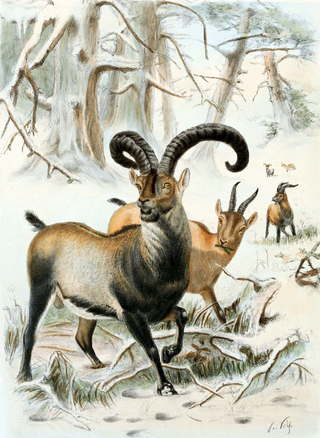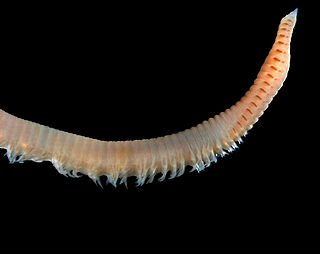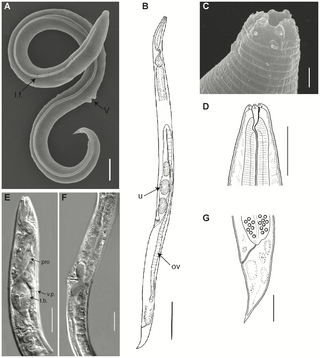
Genus is a taxonomic rank above species and below family as used in the biological classification of living and fossil organisms as well as viruses. In binomial nomenclature, the genus name forms the first part of the binomial species name for each species within the genus.

De-extinction is the process of generating an organism that either resembles or is an extinct species. There are several ways to carry out the process of de-extinction. Cloning is the most widely proposed method, although genome editing and selective breeding have also been considered. Similar techniques have been applied to certain endangered species, in hopes to boost their genetic diversity. The only method of the three that would provide an animal with the same genetic identity is cloning. There are benefits and drawbacks to the process of de-extinction ranging from technological advancements to ethical issues.

Baiera is a genus of prehistoric gymnosperms in the order Ginkgoales. It is one of the oldest fossil foliage types of Ginkgoales, and is related to the genera Ginkgo and Ginkgoites. Fossils of Baiera are found worldwide, and have been known from the Permian to the Cretaceous.
Panagrolaimus detritophagus is a terrestrial free-living nematode (roundworm). It has been reported in California, South America and Europe. It is the type species of the genus Panagrolaimus. In 2018, it, along with another nematode species became the first multicellular organism to be thawed back into a living state after prolonged cryopreservation. Pleistocene permafrost was obtained from the Kolyma River lowland, and thawed. The worms moved and ate after being thawed. They had been frozen for 30–40 thousand years, based on the age of that deposit.

The Interim Register of Marine and Nonmarine Genera (IRMNG) is a taxonomic database which attempts to cover published genus names for all domains of life, from 1758 in zoology up to the present, arranged in a single, internally consistent taxonomic hierarchy, for the benefit of Biodiversity Informatics initiatives plus general users of biodiversity (taxonomic) information. In addition to containing just over 500,000 published genus name instances as at May 2023, the database holds over 1.7 million species names, although this component of the data is not maintained in as current or complete state as the genus-level holdings. IRMNG can be queried online for access to the latest version of the dataset and is also made available as periodic snapshots or data dumps for import/upload into other systems as desired. The database was commenced in 2006 at the then CSIRO Division of Marine and Atmospheric Research in Australia and, since 2016, has been hosted at the Flanders Marine Institute (VLIZ) in Belgium.

Leptomonas is a genus of parasitic flagellate protist belonging to family Trypanosomatidae and subfamily Leishmaniinae sensu Maslov & Lukeš 2012. It is a monoxenous parasite of mainly Hemiptera, Diptera, and Siphonaptera insects.

Acrotrichis is a genus of beetles belonging to the family Ptiliidae.

Hypulus is a genus of beetles belonging to the family Melandryidae. The species of this genus are found in Europe and North America

Scoloplos is a genus of annelids belonging to the family Orbiniidae.
Lochmaea is a genus of beetles belonging to the family Chrysomelidae.

Naineris is a genus of polychaete annelids belonging to the family Orbiniidae. It was first described by Henri Marie Ducrotay de Blainville in 1828. The type species is Nais quadricuspida Fabricius, 1780, currently accepted as Naineris quadricuspida. The genus has cosmopolitan distribution.
Panagrolaimidae is a family of nematodes belonging to the order Rhabditida.

Anomalocardia is a genus of bivalves belonging to the family Veneridae.
Thoreauella is a monotypic genus of wasps belonging to the family Figitidae. The only species is Thoreauella amatrix.
Ostertagia is a genus of nematodes belonging to the family Trichostrongylidae.
Orphinus minor is a species of skin beetle found in India and Sri Lanka.

Plebidonax is a genus of bivalves belonging to the family Psammobiidae.
Retithrips is a genus of thrips in the family Thripidae, first described in 1910 by Paul Marchal. These thrips are leaf-feeding.

Balantidiidae is a biological family of chromists in the phylum Ciliophora. The family name comes from the type genus Balantidium.

Panagrolaimus kolymaensis is a species of nematode.












